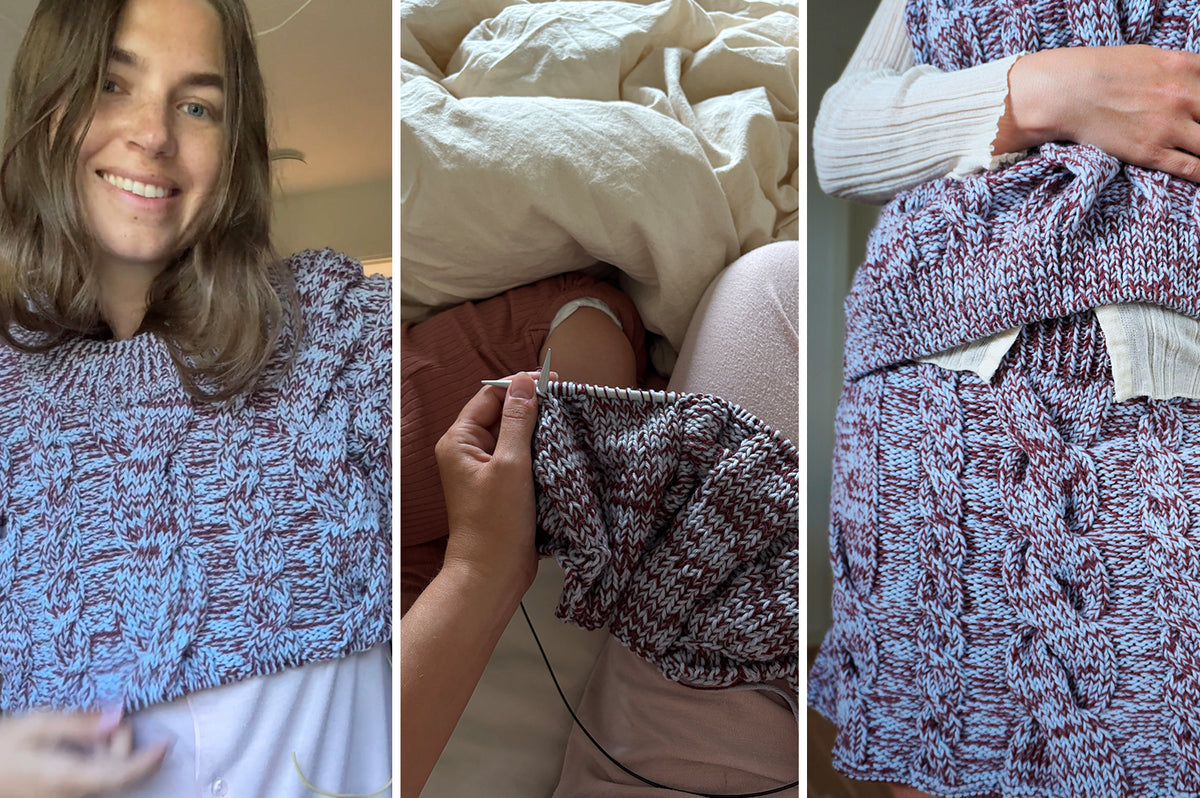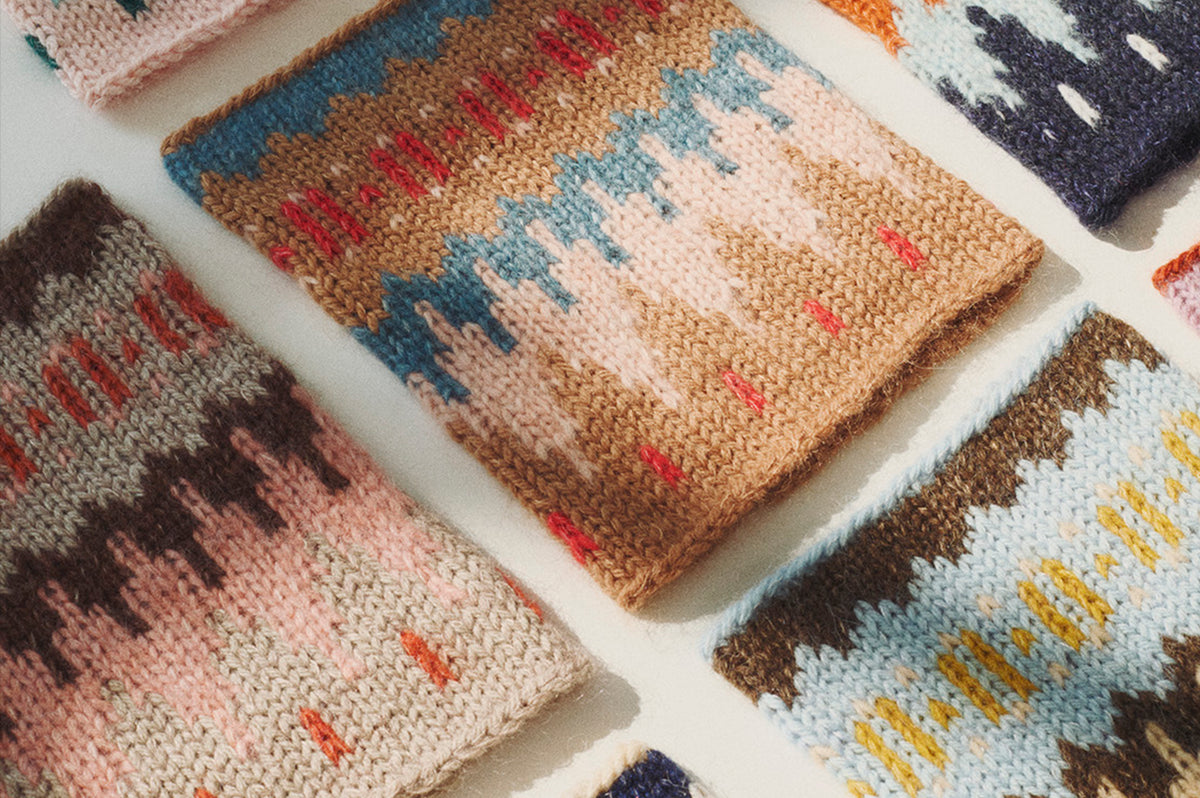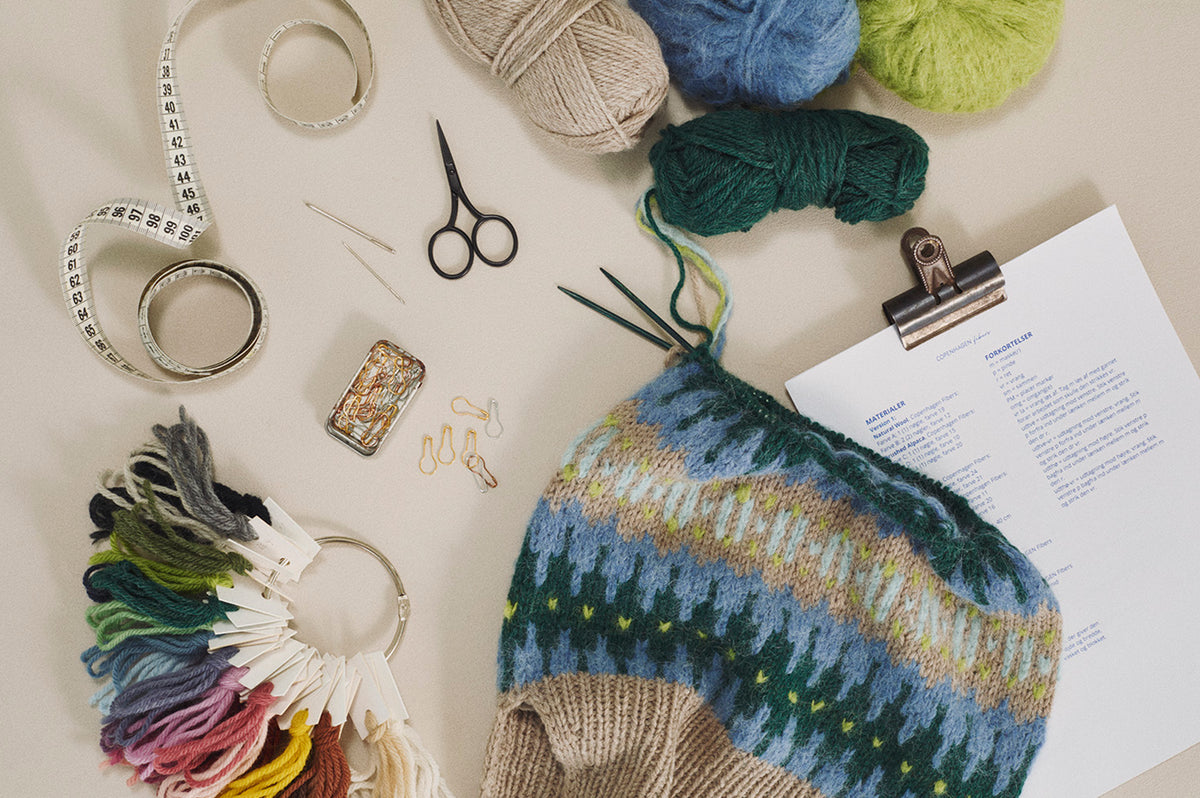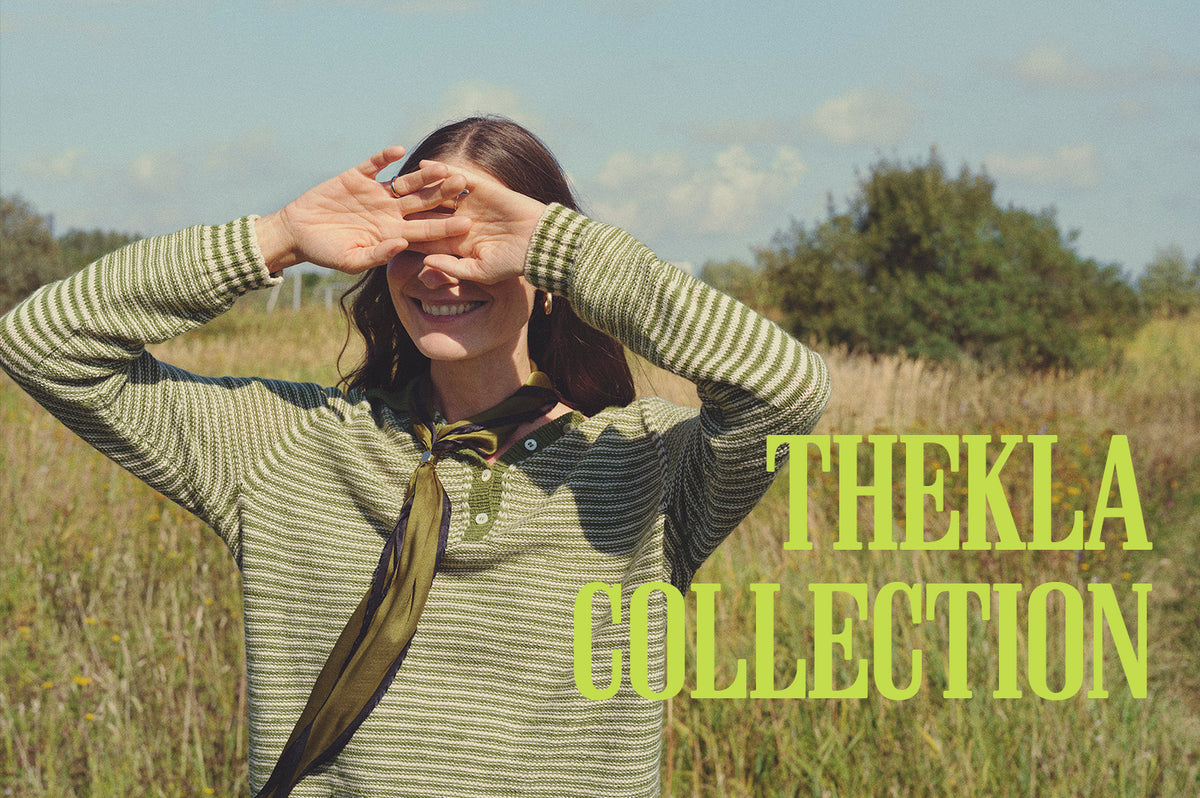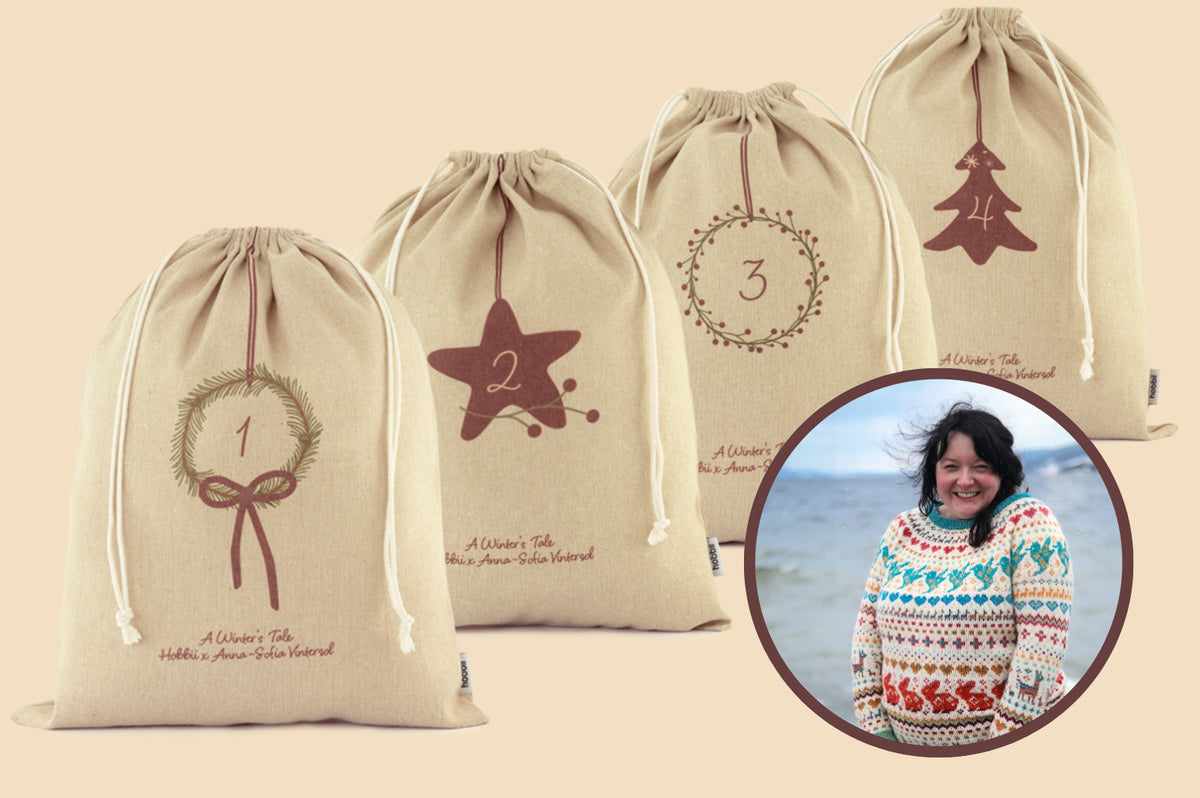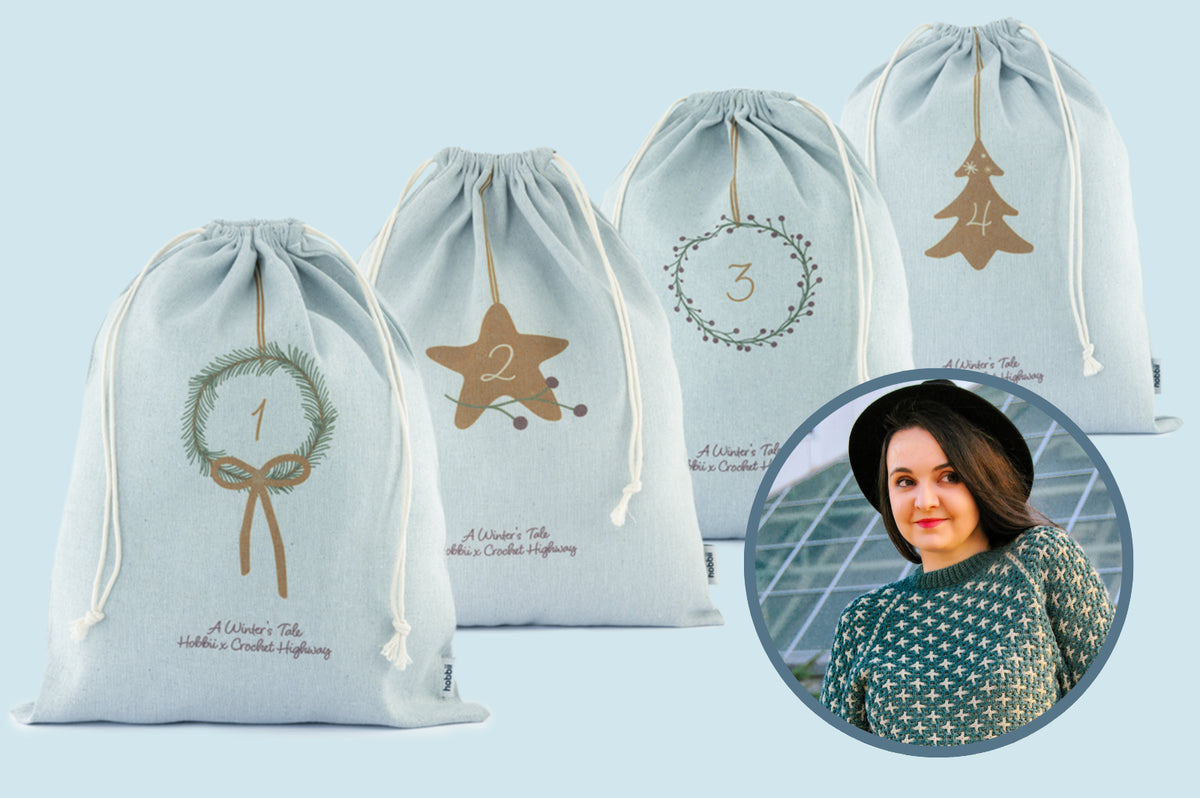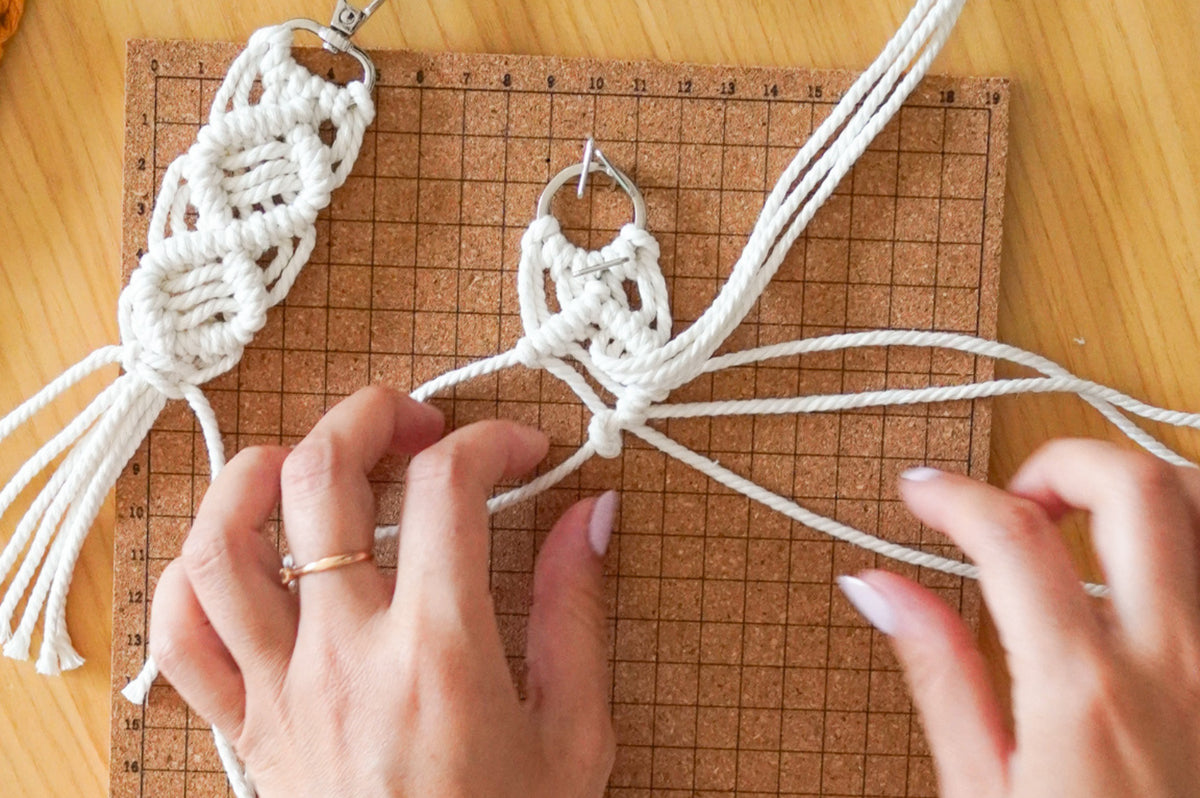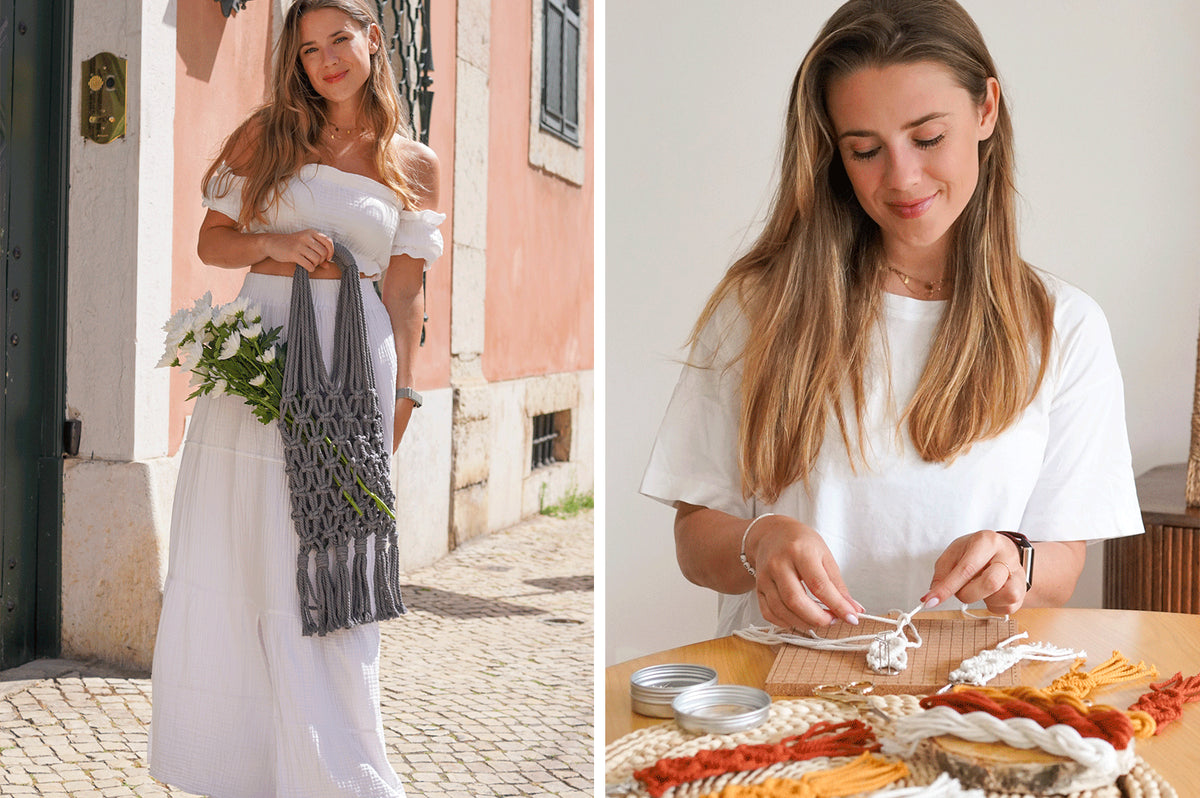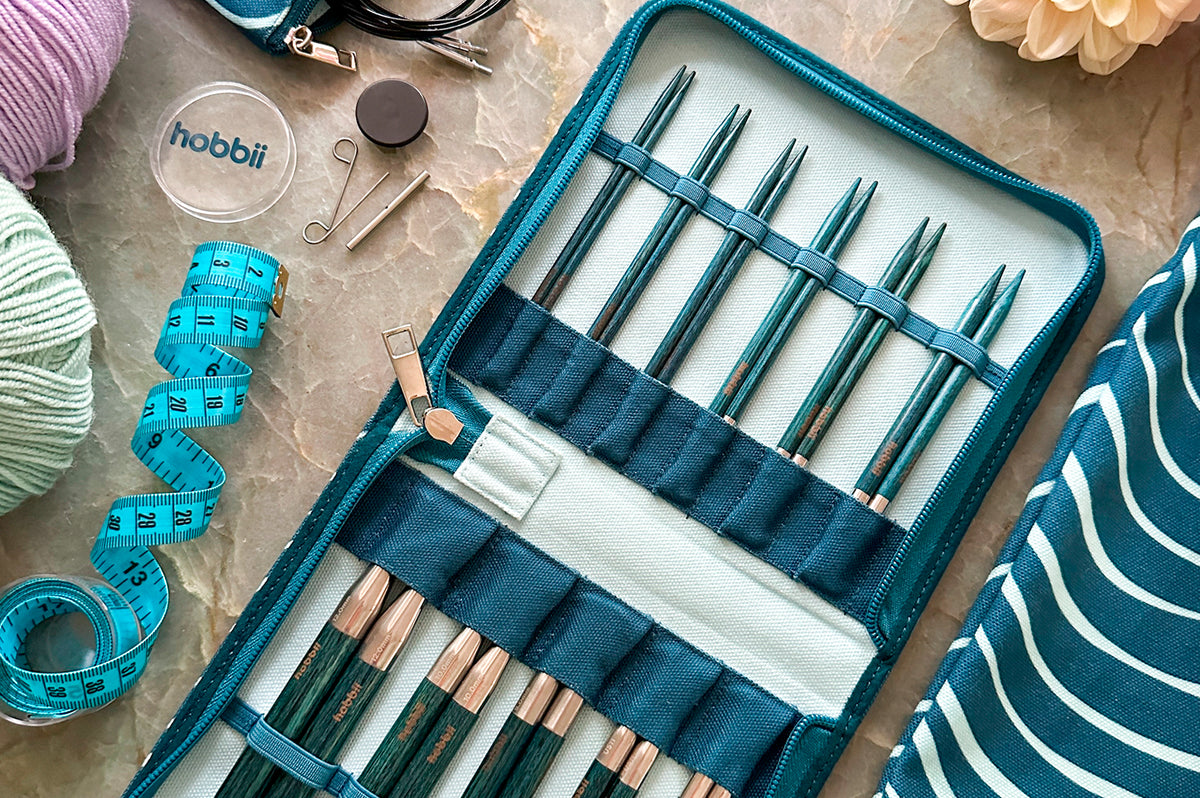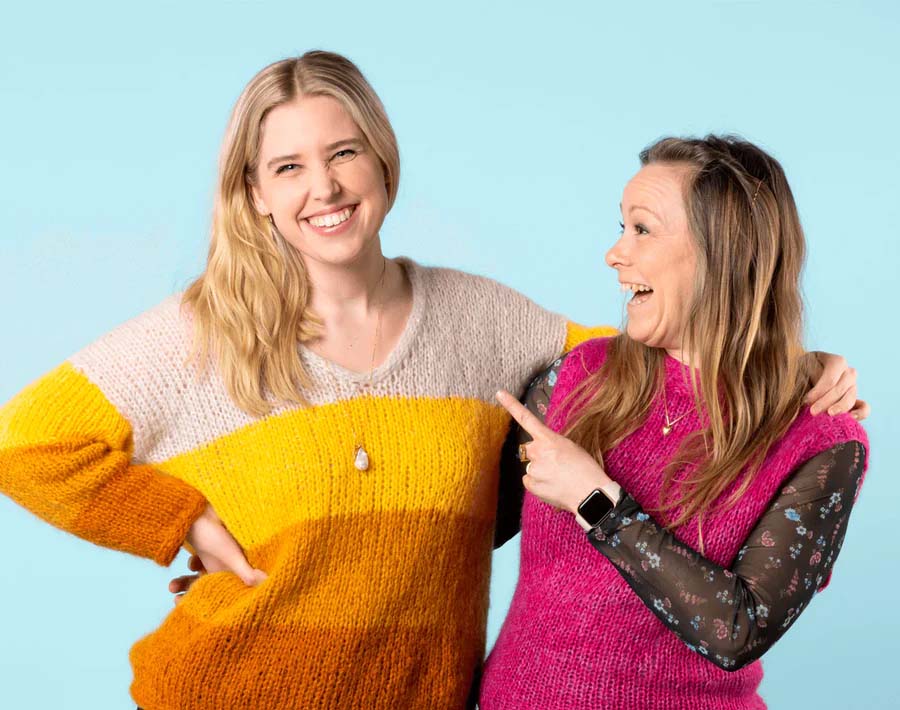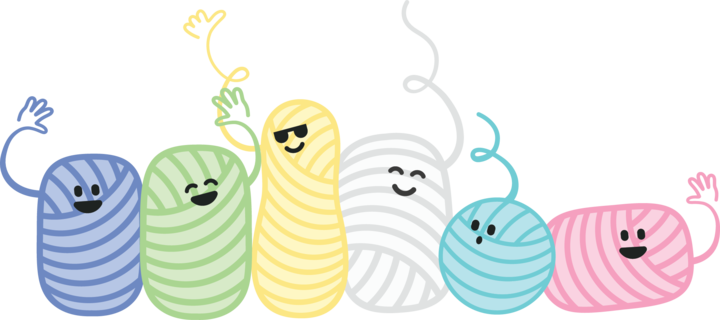Stranded knitting looks impressive and complicated. But once you learn how to handle floats, it’s easier than you think. And the payoff is huge: bold motifs, smooth fabric, and handknits you’ll be proud to wear.
Floats are at the heart of Copenhagen Fibers’ Dorthea Collection, where sweaters and accessories all use stranded knitting to create bold Nordic-inspired patterns. If you’re new to the technique – or just not feeling confident yet – this guide will help you get comfortable with floats, step by step.
What Are Floats and Why Do They Matter?
When knitting stranded colorwork, you carry two yarns across the same row. While you’re knitting with one color, the other travels across the back. These strands are called floats.
- On the front: you see the pretty motif.
- On the back: floats hang behind your stitches.
Managing floats is essential to dive into because they:
- Hold the unused yarn in place until you need it again.
- Affect tension – too tight, and your fabric puckers; too loose, and your tension might be off.
- Impact wearability – long floats can snag if not secured properly.
How to Work with Floats
- Knit your stitches in the working color as normal.
- Let the yarn not in use travel loosely across the back of your work.
- Spread your stitches along the right-hand needle every few stitches. This prevents floats from pulling too tight.
Quick check: If your fabric doesn’t stretch easily, your floats are probably too tight. Relax your tension and try again.
How to Secure Floats (Catching Them In)
Sometimes, stranded knitting requires you to carry a strand across the back of your work for several stitches. If the float is too long, it can snag when you put your sweater or mittens on. That’s where securing comes in.
When to secure: Every 3-5 stitches, depending on gauge and yarn.
How to Secure Floats:
- Knit a stitch in your working color.
- Before the next stitch, bring the unused yarn over the working yarn.
- Knit the next stitch with your working color.
- Move the unused yarn back to its original position.
- On the front, your motif stays clean. On the back, the float lies neatly against the fabric.

Can’t wait to share your project? The Dorthea Yoke Sweater brings that feeling to life with bold colorwork that stands out when you master floats and color dominance.
Extra Tips for Confidence
Swatch first
Practice colorwork on a small swatch to get a feel for tension.
Stay consistent
When knitting with two colors, the strand you hold closer to your work becomes dominant – it pops forward in the motif, while the other recedes.
Always hold your yarns the same way to keep motifs even. For more on this, see our guide on color dominance in stranded knitting.
Block your work
A gentle wash and block relaxes stitches and helps floats settle smoothly.
Exploring Colorwork With Dorthea
The Dorthea Mittens are a great first step. You’ll get used to floats quickly without committing to a big project.
The Dorthea Cowl is another confidence-builder. Worked in the round, it lets you practice stranded knitting on a manageable canvas while creating a stylish and wearable piece.
Once you feel ready, the Dorthea Sweater and Yoke Sweater take your skills further, with larger motifs that reward you with stunning, head-turning results. Each project helps you grow – and before long, floats will feel like second nature (we promise!).
Keep Knitting with Confidence
Floats may look tricky, but they’re simply part of the rhythm of stranded knitting. With a little practice, you’ll find your own flow. And the beautiful Dorthea designs are the perfect place to start. Explore the Dorthea patterns here.
Shop Copenhagen Fibers yarns ➜
Show us your colorwork journey on Instagram @hobbii_yarn and @copenhagenfibers using #hobbiidorthea or #COPENHAGENfibersbyHobbii. We love celebrating your progress.
Because Copenhagen Fibers is Made to Notice.


